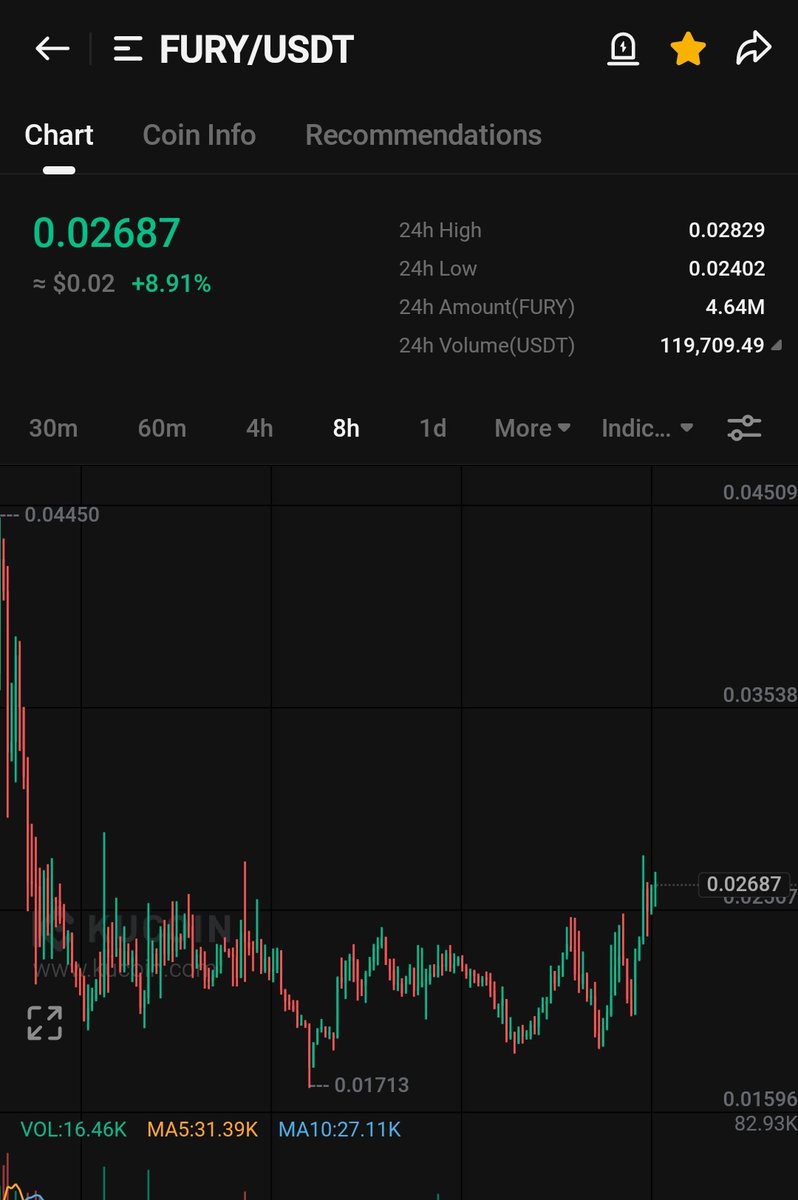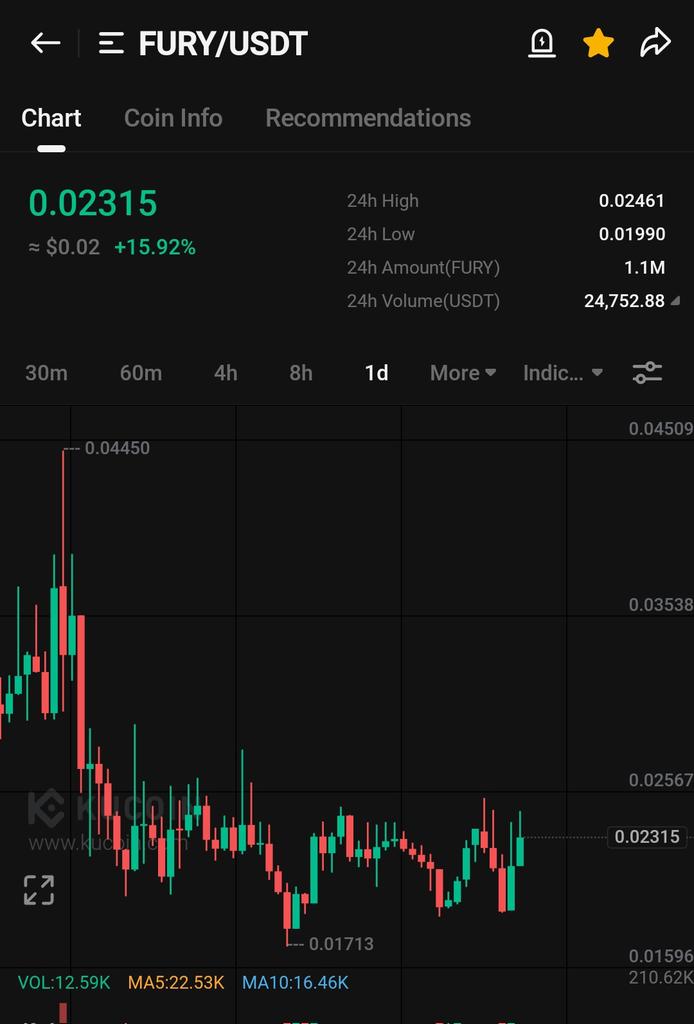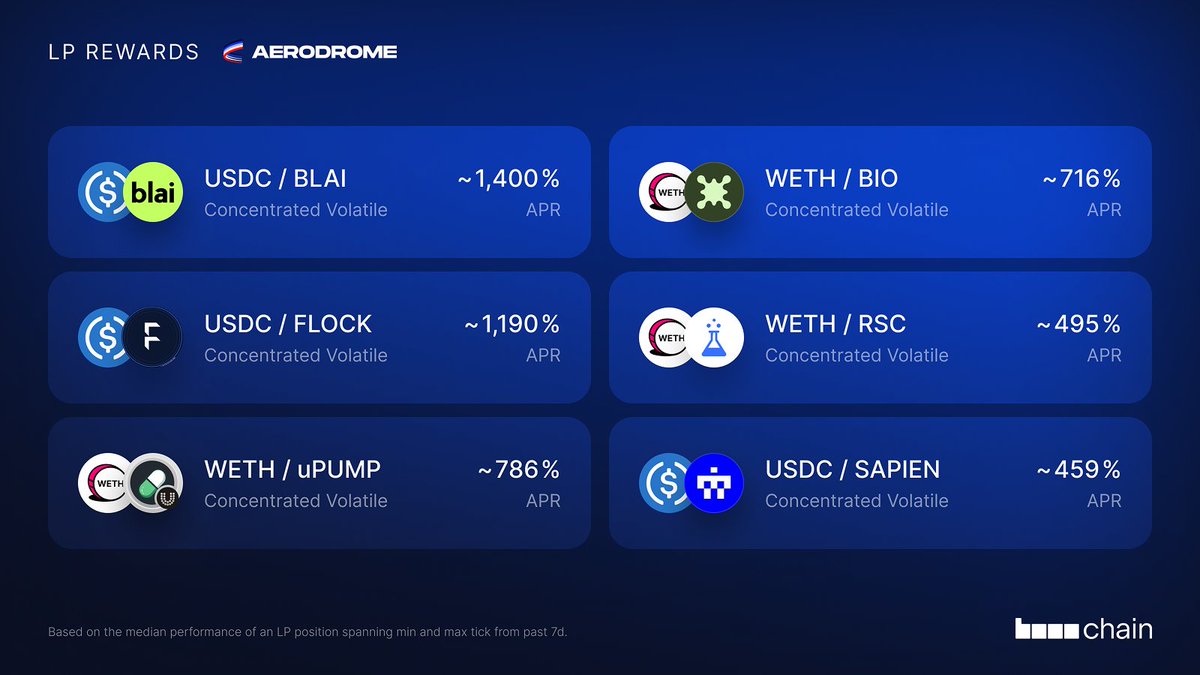Cours de BIO
en EUR€0,13804
-€0,0086607 (-5,91 %)
EUR
Nous n'avons pas trouvé cette crypto. Vérifiez votre orthographe ou essayez-en une autre recherche.
Cap. boursière
€283,35 M
Approvisionnement en circulation
2,05 Md / 3,32 Md
Sommet historique
€0,77664
Volume sur 24 h
€122,97 M
3.9 / 5


À propos de BIO
Avis de non-responsabilité
Le contenu social sur cette page (« Contenu »), y compris mais sans s’y limiter les tweets et les statistiques fournis par LunarCrush, est issu de tiers et fourni « tel quel » à des fins d’information uniquement. OKX ne garantit ni la qualité ni l’exactitude du Contenu, et le Contenu ne représente pas les opinions d’OKX. Il n’est pas destiné à dispenser (i) des conseils ou recommandations en matière d’investissement ; il ne doit pas (ii) non plus être considéré comme une invitation à acheter, à vendre ni à détenir des actifs numériques, ni (iii) comme des conseils financiers, comptables, juridiques ou fiscaux. Les actifs numériques (dont les stablecoins et les NFT) présentent un niveau de risque élevé, et leur valeur peut varier considérablement. Les cours et les performances des actifs numériques ne sont pas garantis et peuvent changer sans préavis.OKX ne fournit aucune recommandation en matière d’investissement ou d’actif. Évaluez attentivement votre situation financière pour déterminer si vous êtes en mesure de détenir ou de trader des actifs numériques. Demandez conseil auprès de votre expert juridique, fiscal ou en investissement pour toute question portant sur votre situation personnelle. Pour plus de détails, consultez nos Conditions d’utilisation et notre Avertissement sur les risques. En utilisant le site Web tiers (« SWT »), vous acceptez que toute utilisation du SWT soit soumise et régie par les conditions du SWT. Sauf mention écrite expresse, OKX et ses sociétés affiliées (« OKX ») ne sont en aucun cas associées au propriétaire ou à l’exploitant du SWT. Vous acceptez qu’OKX ne soit responsable d’aucune perte, d’aucun dommage et d’aucune autre conséquence découlant de votre utilisation du SWT. Sachez que l’utilisation d’un SWT peut déboucher sur la perte ou la baisse de vos actifs. Le produit peut être indisponible dans certaines juridictions.
Performance du cours de BIO
Année dernière
--
€0,00
3 mois
+142,55 %
€0,06
30 jours
+163,99 %
€0,05
7 jours
-36,06 %
€0,22
BIO sur les réseaux sociaux

🤔 @AerodromeFi Nouveaux pools LP ajoutés : $BLAI, $uPUMP, $RSC, $SAPIEN
Le APR du nouveau $USDC – $SAPIEN est maintenant d'environ 442,3 % (plage de 8 %)
Le prix de $SAPIEN montre des signes de stabilisation, si le déblocage linéaire se poursuit au cours des 3 prochains mois sans nouvelles positives évidentes, le prix pourrait continuer à fluctuer dans cette plage
Si vous détenez $SAPIEN, envisagez de le verrouiller dans le pool, les rendements réels provenant de LP + l'augmentation future pourraient dépasser les attentes
#KaitoYap @KaitoAI @JoinSapien @albeethekid @Chrismay1208 @RowanRK6 & @trevorkoverko

Récemment, j'ai appris à m'arrêter et à attendre pour la première fois.
C'est aussi récemment que j'ai été assez occupé, n'ayant pas le temps de trader.
Mais mon état d'esprit s'est beaucoup amélioré par rapport à avant.
Les seules cryptomonnaies que j'ai achetées sont $bio et $launchcoin.
Avant, j'étais toujours très agité, je voyais une cryptomonnaie monter et je devenais anxieux.
Il y a une phrase dans le monde des cryptomonnaies que je ne sais pas si c'est une blague ou si c'est sérieux,
qui dit que tu penses toujours que les opportunités sont infinies, mais tu ne chéris pas ce qui est devant toi.
Des opportunités comme $Trump et $wlfi, si tu les rates, tu ne les reverras pas.
Cependant, beaucoup d'opportunités se présentent chaque semaine, voire chaque jour.
Il n'est pas nécessaire de leur accorder trop d'importance, y accorder trop d'importance peut te rendre fou, te faire tomber dans le FOMO, ce qui entraîne des achats à des prix élevés ou des profits non réalisés, et finalement des pertes.
Je me retrouve souvent dans cette situation, surtout quand je perds, ce qui fait que je ne gagne pas beaucoup quand je le fais, et il y a beaucoup de cas où une perte me ramène à zéro.
Une autre raison est que je ne prends pas les choses au sérieux et je ne réfléchis pas. Il est maintenant très difficile de trouver des actifs dans lesquels je veux investir massivement, mais quand je fais des investissements légers, je néglige souvent les stops. Souvent, j'achète quelques SOL et je suis trop paresseux pour mettre un stop, car je ne perds pas beaucoup d'argent. Il est très difficile de réfléchir en profondeur, c'est un cercle vicieux. Il vaut mieux s'arrêter et attendre une opportunité.
Quand on est perdu ou qu'on ne comprend pas, il peut être judicieux d'arrêter de trader.
Si l'on considère le profit comme le seul critère d'évaluation, alors se reposer peut en fait te permettre de surpasser la grande majorité des participants du marché. Ne jouer qu'aux narrations que tu comprends, chéris chaque centime, ne prends pas un risque de 10 euros pour gagner 1 euro.
Guides
Découvrez comment acheter BIO
On peut vite se sentir dépassé lorsque l’on se lance dans les cryptos. Cependant, apprendre où et comment acheter des cryptos est plus simple que vous ne l’imaginez.
Prédire les cours de BIO
Combien vaudra BIO au cours des prochaines années ? Découvrez les avis de la communauté et faites vos prédictions.
Afficher l'historique du cours de BIO
Suivez l'historique des cours de vos BIO pour surveiller la performance de vos actifs détenus au fil du temps. Vous pouvez facilement consulter les valeurs d'ouverture et de clôture, les plus hauts, les plus bas et le volume de trading à l'aide du tableau ci-dessous.

Acquérez BIO en 3 étapes
Créez gratuitement un compte OKX.
Approvisionnez votre compte.
Choisissez votre crypto.
FAQ BIO
Actuellement, 1 BIO vaut €0,13804. Vous recherchez des informations sur les mouvements de prix du token BIO ? Vous êtes au bon endroit ! Découvrez les graphiques les plus récents sur le token BIO et tradez de manière responsable avec OKX.
Les cryptomonnaies, telles que les BIO, sont des actifs numériques fonctionnant sur un registre public appelé blockchain. En savoir plus sur les jetons proposés sur OKX et leurs différents attributs, notamment le cours en direct et les graphiques en temps réel.
En raison de la crise financière de 2008, l’intérêt porté à la finance décentralisée a explosé. Le Bitcoin offrait une solution novatrice en tant qu’actif numérique sécurisé sur un réseau décentralisé. De nombreux jetons tels que les BIO ont également été créés depuis lors.
Consultez notre Page de prédiction des cours de BIO pour prévoir les cours à venir et déterminer vos objectifs de cours.
Plongez dans l’univers BIO
BIO Protocol est une couche financière de DeSci, qui canalise les capitaux et les talents vers la science on-chain.
Déclaration ESG
Les réglementations ESG (approche environnementale, sociale et de gouvernance) relatives aux actifs crypto visent à réduire leur impact environnemental (par exemple : l'extraction minière à forte intensité énergétique), à promouvoir la transparence et à garantir des pratiques de gouvernance éthiques afin d'aligner le secteur des cryptos sur des objectifs plus larges en matière de durabilité et de société. Ces réglementations encouragent le respect de normes qui atténuent les risques et favorisent la confiance dans les actifs numériques.
Cap. boursière
€283,35 M
Approvisionnement en circulation
2,05 Md / 3,32 Md
Sommet historique
€0,77664
Volume sur 24 h
€122,97 M
3.9 / 5








































